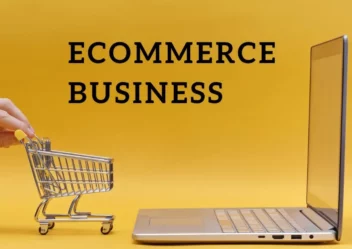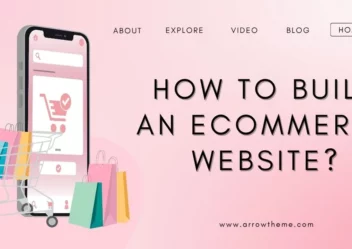How to Start a Wholesale Distribution Business: Ideas & Tips
Online retailers’ thriving makes wholesale distribution booming. Every product on a store shelf, in a warehouse, or on your doorstep likely passed through the hands of a wholesale distributor. In the United States alone, the wholesale distribution industry employs over 5.8 million people, accounting for approximately 3.5% of the total private workforce. It’s a massive ecosystem that quietly powers much of the economy.
As more brands seek to scale their online presence, the demand for reliable wholesalers has increased. Starting a wholesale distribution business doesn’t always require owning a warehouse or a huge upfront investment. With the right niche, supply chain strategy, and digital tools, you can carve out a profitable path in this space.
So, if you’ve been thinking about breaking into wholesale but aren’t sure where to begin, this guide is for you. ArrowTheme’ll break down what wholesale merchants actually do and how to start a wholesale distribution business.
Claue – Clean and Minimal Magento Theme
We provide an amazing Magento theme with fast and responsive designs. Let’s find out!
What is a Wholesale Distribution Business?
A wholesale distribution business is the middle layer in the supply chain. It purchases goods in bulk from manufacturers and sells them in smaller quantities to retailers, resellers, or even other distributors. Think of wholesalers as the crucial bridge between production and consumer markets. They help manufacturers focus on what they do best – producing while supporting retailers to get access to a wide range of products efficiently and cost-effectively.
The wholesale model primarily follows the B2B (business-to-business) structure. Their customers are other businesses, most often retail stores, e-commerce sellers, or service providers who then sell to the final consumers. This layered structure builds better specialization, price negotiation, and inventory management at scale.
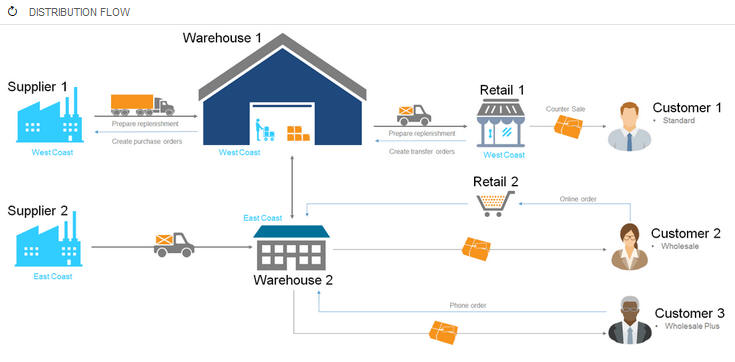
Wholesalers purchase large volumes of products directly from manufacturers. Because they buy in bulk, they often receive volume discounts and favorable pricing terms. Then they resell the goods to retailers at a markup and still offer competitive rates.
For example, a wholesaler might buy 10,000 units of a product at $2 each from the manufacturer and then sell them to multiple retailers at $3 per unit. This margin covers the wholesaler’s operating costs (like warehousing, logistics, and staffing) and generates profit.
Nowadays, supply chains become more digitized. Many wholesalers now also use cloud-based inventory systems, AI-driven forecasting tools, and automated order processing to improve speed and reduce costs.
According to IBISWorld, as of 2024, the U.S. wholesale trade market is valued at over $12.4 trillion and is projected to continue growing alongside global eCommerce and industrial demand. The World Trade Organization (WTO) also highlights that wholesale distribution accounts for a significant share of GDP in both developed and developing economies.
Difference Between Wholesale Business and Retail Business: Which One Fits You Best?
Before diving into the world of wholesale distribution, it’s important to understand how it differs from retail, which model aligns better with your strengths and interests.
A retail business sells goods directly to the end consumer. This means you’re handling everything from product selection and marketing to customer service and post-sale support. Retailers typically run storefronts, online shops, or marketplaces like Amazon or Shopify. The customer experience is your top priority, so if you’re passionate about branding, creative marketing, customer relationships, and understanding buyer behavior, retail could be your path.
On the flip side, a wholesale business sells to other businesses, most often retailers or institutional buyers, not the general public. Your focus isn’t on colorful ads or final sales. Instead, it’s about volume, efficiency, pricing strategy, and logistics. Wholesalers buy large quantities of products from manufacturers and resell them in bulk, usually at a markup, but at a lower price per unit than retail.
In the U.S., the average gross margin in retail is around 50–60%, wholesale margins typically range between 20–30%. Wholesalers offset this with larger sales volumes and lower overhead on customer-facing operations.
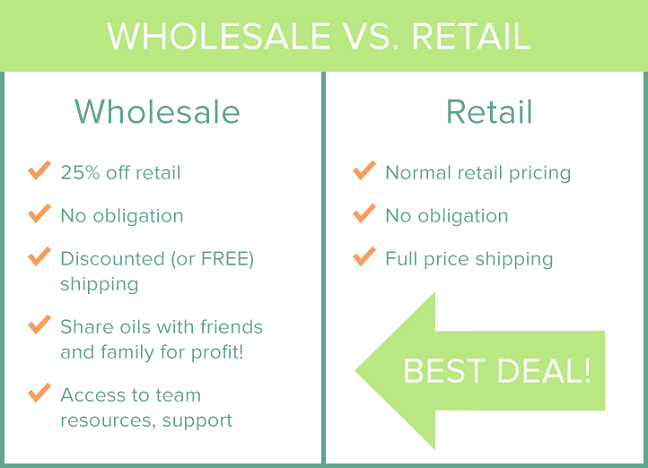
So which model is right for you?
Choose retail if you’re creative, customer-driven, and enjoy dynamic trends and hands-on selling.
Choose wholesale if you’re process-oriented, good at negotiating, and prefer managing operations, supply chains, and backend systems.
Also consider the scalability: wholesale businesses often grow faster because they rely on fewer but larger transactions, while retail needs building a broad base of individual customers over time.
In the end, the right choice depends on your goals, personality, and strengths. Both models can be highly profitable if matched with the right strategy and mindset.
Define Your Customers in Wholesale: Who Are Wholesale Distribution Businesses Really Selling To?
Before launching a wholesale distribution business, one of the first strategic steps is identifying who your customers are. Wholesale operates in a business-to-business (B2B) ecosystem. This means your customers are also businesses, and knowing which type you’re targeting will shape your pricing, packaging, logistics, and even your marketing approach.
Here are the three main types of customers to consider:
1. Retailers
These are your most common wholesale buyers. Think:
- Independent retail stores
- Supermarkets and department chains
- Big-box retailers like Walmart, Target, or Best Buy
Retailers buy in bulk and resell products directly to consumers. To work with them, you’ll need strong product appeal, reliable supply, and competitive pricing. For large chains, expect stricter vendor requirements, but the volume can be worth it.
2. Retail Distributors
Sometimes, you won’t be able to sell directly to big retailers and that’s where distributors come in. These businesses act as intermediaries between wholesalers and retailers.
Examples include:
- Regional or national distributors that supply supermarket chains
- Exporters who purchase goods in bulk and ship them overseas
- Specialty distributors in niches like electronics, health & beauty, or organic foods
Working with distributors can widen your market reach without managing dozens or hundreds of small retailer accounts yourself.
3. Other Wholesale Distributors
Surprisingly, your customers can also include other wholesalers. This happens in industries where supply chains are complex or access to manufacturers is limited.
For example:
You might partner with a primary distributor who has an exclusive agreement with a manufacturer.
Or, if you specialize in logistics or local market access, another wholesaler may rely on you to supply them efficiently.
This model often works well in global trade, food supply, or industrial goods. In this, multiple layers of distribution are common.
What Products Can You Distribute as a Wholesale Distribution Business?
Choosing the right product niche is one of the most important decisions in building a successful wholesale distribution business. There’s no shortage of options. The importance is to find a category that aligns with your resources, market trends, and customer demand.
Here are some popular and high-potential product categories to consider:
Beauty and Personal Care Products
This is a consistently growing industry with global revenue projected to surpass $750 billion by 2025. Skincare, haircare, and makeup demand is constant, and brand loyalty is strong.
Consider distributing:
- Organic skincare products
- Hair oils and shampoos
- Facial masks and serums
- Fragrances and cosmetics
Home Improvement and DIY Products
Remote work has turned homes into offices, classrooms, and gyms. As a result, spending on home improvement and organization tools has surged.
- In-demand products include:
- Home office furniture
- Lighting fixtures
- Storage solutions and shelves
- Smart home gadgets
- DIY toolkits
According to Statista, the U.S. home improvement market is expected to reach over $620 billion by 2025.
Food and Beverage
Food is always in demand. From dry goods and beverages to organic snacks or specialty imports, this market offers both volume and variety.
Wholesale food distributors typically deal in:
- Packaged snacks and canned goods
- Organic and healthy foods
- Non-dairy and vegan products
- Beverages and coffee supplies
While this space is competitive, it also offers strong growth, especially with the rise in specialty diets and sustainable sourcing.
Other Promising Categories
Depending on your network, location, and niche, you can also explore:
- Jewelry and accessories
- Toys and educational products
- Automobile parts and tools
- Agrochemicals and seeds
- Textile and apparel
- Stationery and office supplies
- Electronics and smart devices
- Furniture and decor
- Medicines and wellness supplements
Ultimately, the right product choice depends on market demand, sourcing ability, storage capacity, and sales channels. Look for products with repeat buying cycles, growing trends, or underserved segments, and build your wholesale business on a foundation of strong logistics and customer trust.
How to Start a Wholesale Distribution Business: Step-by-Step Guide
If you want to start a wholesale distributor, here are some basic steps for you to refer to.
1. Define Your Market and Business Model
The first step is to determine what your business will sell and to whom. Are you targeting retail stores, smaller wholesalers, or export markets? Will you specialize in consumer goods, industrial supplies, or niche products?
Defining your business model (B2B or hybrid B2C) will tailor your pricing, marketing, and logistics. Conduct market research to evaluate demand, identify your competitors, and understand potential opportunities or gaps in the industry.
2. Find Reliable Suppliers
Once you’ve defined your products and customers, it’s time to source trustworthy suppliers. Wholesalers typically buy in bulk at lower prices and resell at a margin, so supplier reliability directly impacts your profitability. Look for manufacturers or producers that offer competitive pricing, consistent quality, and fair terms. Ask about return policies, delivery times, and minimum order quantities before entering into any agreement.
3. Set Up Warehouse and Office Space
You’ll need warehouse space to store large quantities of inventory. Choose a location with good transportation access and space to scale as your business grows. If you’re starting small, shared warehouse services or third-party logistics (3PL) can be a cost-effective solution. Additionally, set up a modest office space for administrative tasks and customer support.
4. Create a Professional Website
Today’s wholesale buyers expect a seamless online experience. Build a website that showcases your product catalog, order forms, pricing tiers, and business contact details. Your site should be B2B-friendly. Clients can create accounts, request quotes, and place bulk orders. eCommerce platforms like Magento, Shopify Plus, and WooCommerce (with B2B plugins) offer excellent solutions for building wholesale stores with minimal coding required.
5. Understand Legal Requirements and Return Policies
To operate legally, register your business, acquire a tax ID, and apply for any required wholesale licenses in your region. Develop clear return and refund policies that align with your suppliers’ terms. It’s also wise to consult a business attorney to draft contracts and comply with local laws, especially if you’re dealing with overseas vendors or clients.
Tips for Beginners to Start a Wholesale Distribution Business
Below are essential tips from wholesale professionals that can help you build a strong foundation and avoid common pitfalls.
Implement an ERP System Early
Invest in an Enterprise Resource Planning (ERP) system that integrates with your inventory management software. Since wholesalers deal with logistics, inventory, and customer data across multiple channels, an ERP system offers a centralized platform to track everything in real-time. It supports you in streamlining operations, avoiding stockouts or overstocking, and making smarter supply chain decisions.
Set Realistic Sales Goals
Don’t try to conquer the market in the first month. Instead, aim to increase your sales goals step by step, especially after the initial 6-month mark. Based on it, you can measure what’s working, fine-tune your strategy, and build sustainable growth rather than chasing vague, oversized targets.
Learn the Legal Side of the Business
You must understand the required licenses, tax obligations, resale certificates, and business registration rules in your country or state. Complying with legal requirements from day one can save you from costly penalties or disruptions later on.
Choose Suppliers Wisely
Before signing any contracts, evaluate your suppliers based on product pricing, delivery time, order flexibility, and return policies. Also, consider the communication style and reliability of the supplier. Remember, strong partnerships often hinge on mutual trust and transparency.
Start with High-Demand, Low-Risk Products
When selecting your first products, look for high-demand items that are not fragile or perishable. It reduces the risk of loss if inventory sits unsold for a while. For example, items like personal care products, stationery, or non-electronic tools can be easier to manage and store during the early stages.
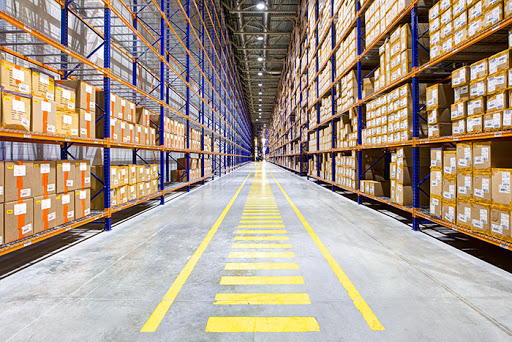
Manage Inventory with Cash Flow in Mind
One of the smartest financial strategies is to stock products only to the level where you can sell them before payment is due. This approach maintains a healthy cash flow and reduces the risk of being overstocked with unsold goods.
Prioritize Customer Service
In wholesale, relationships matter just as much as pricing. Prompt support, clear communication, and flexibility go a long way in building trust and encouraging long-term partnerships.
Align Growth Strategy with Manufacturer Dynamics
Depending on the level of monopoly or competition among your suppliers, tailor your development strategy accordingly. If you’re working with exclusive or hard-to-access products, you might focus on volume. If the products are widely available, prioritizing margins over volume could make more sense.
Keep a Close Eye on Cash Flow
Monitor your cash flow regularly to avoid gaps between supplier payments and customer collections. Whenever possible, negotiate longer payment terms with your suppliers to offset the credit you might offer your customers.
Support Retailers Beyond Just Products
Help your customers succeed by offering product training, marketing support, or promotional materials. Remember, your success is tied to theirs: the more effectively your retailers sell to end-users, the more they’ll return to you for repeat orders. Building a win-win relationship pays off in the long run.
Conclusion
Our blog summed up the most basic fundamentals of the wholesale distribution business. Arrowthemes wishes you a good start. You can read more useful articles about e-commerce business here. Besides, during you run an eCommerce business, you may have some technical problems. Feel free to contact us to receive support!
Contact US – ArrowTheme:
– Email: [email protected]
– Facebook: Facebook.com/ArrowThemeTeam
– Website: ArrowTheme.com
Read more: Shopify SEO Guide: 7 Proven Tactics to Boost Your Rankings


